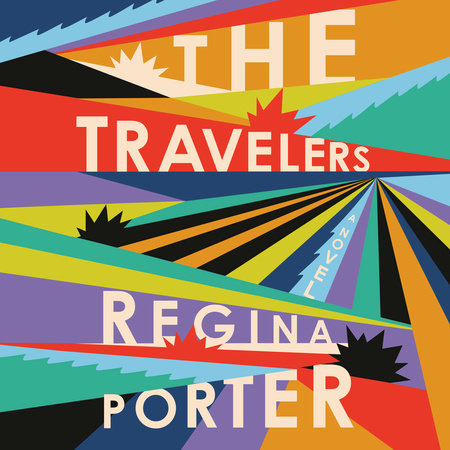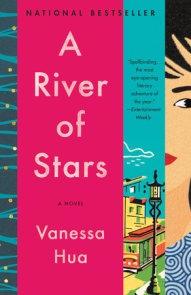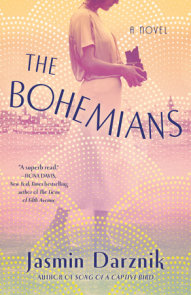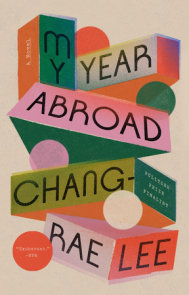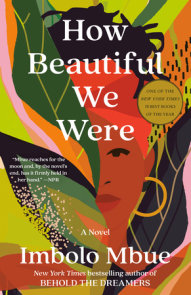READERS GUIDE
‘History surrounds us. Evidence of how we came into being, mutated, had children.’ p. 198
1. In the seven-page opening of The Travelers, “Pass It On,” Regina Porter swiftly runs through six decades in the life of one of the novel’s central characters: “the man” James Samuel Vincent, Jr. Throughout the rest of the book, however, the author adds layers and texture to her characters by delving into their family histories and the intergenerational traumas that travel through time and country. With reference to specific moments in the text, how did Porter capture the specificities of place and time in the many different eras and locations of this book? Did you feel that you gradually gained a greater sense of understanding for individual characters as you learned more about their origins and the experiences of their family members?
2. The Travelers does not follow a linear narrative, but jumps back and forth in time and between the perspectives of different characters. How did this affect your reading experience?
3. Regina Porter’s writing has a strong focus on causality, or how certain events and choices have life-altering effects on individuals. For example, if Agnes Miller had married Claude Johnson instead of Eddie Christie, an entirely different cast of characters would have existed in The Travelers. What other examples of cause and effect can you pull from the novel, and how do you think things would have turned out differently had these instances not occurred?
4. How does this book convey the ways in which human beings are shaped and altered by their encounters and relationships with one another? You might choose to discuss, for example, how children are influenced by their parents or how certain characters are motivated to differentiate themselves from those of previous generations.
5. Did this novel remind you of any “great” books of the American literary tradition? How might The Travelers cast light on or add complexity to themes that have traditionally been overlooked in the American canon, such as homosexual and interracial relationships? Did reading this book in any way challenge your view of the ways in which certain social and political issues have, in the past, been represented or painted-over in mainstream literature and other art forms?
6. The literature of William Shakespeare is of deep significance for several characters in The Travelers. For example, Sister Mary Laranski proclaims to her pupils that “a life without Shakespeare is no life at all,” (p. 150) while Eddie Christie finds relief in reciting passages from Tom Stoppard’s play, Rosencrantz and Guildenstern Are Dead, and Eddie’s daughter, Claudia, becomes a Shakespeare scholar. Why do you think the appreciation of Shakespeare has endured through centuries and into the present day, and how is it relevant to this novel?
7. Much like even the most tragic Shakespearean dramas, The Travelers is interspersed with many moments of comic relief. How do you see Porter’s characters retain a sense of humor even during times of intense sadness? What for you were the funniest moments in the book?
8. Agnes and Eddie each carry unspeakable traumas with them through most of their lives. How do memories of traumatic events manifest in their behavior over the years?
9. Although Charles Camphor discourages his son Hank’s friendship with the Applewoods, a neighboring black family, he displays profound generosity for Jerome Jenkins, “the only black boy in Hank’s grade at Sunset Beach School.” (p. 107) Given the contempt Charles seems to have for the Applewoods, why do you think he extends such kindness to Jerome?
10. Before Eloise Delaney travels to Texas to train for the Women’s Air Force, she is cautioned by her friend and lover, Flora Applewood: “Look but don’t touch, Eloise. And if you do touch, touch at your own risk: a homespun precursor to Don’t ask, don’t tell.” (p. 170)
Did you notice any other precursors in The Travelers to present-day social and political issues in America? You might discuss LGBTQ rights, Black Lives Matter, or other social justice movements.
11. Adele Pransky’s children noticed that their father Yan, “never mentioned his mother or his family or anything about his childhood. And he bristled if they or Adele inquired or asked. The siblings did not know what was more unnerving: that they had to live with Yan or that he had no past.” (p. 226)
Thinking back to your answers to Question 1, do you think it is more difficult to have empathy for Yan than for other characters, having learned no concrete details about his dark past?
12. Fire and water are recurring motifs in The Travelers, particularly in the form of burning houses or in characters’ fears of death by drowning. The elements air and earth similarly recur, seen in Eloise’s affinity for flight and in Rufus’s connection to the land through his Joycean scholarship (for, as his father mentions, “Joyce is land” [p. 256]). Where else did you notice the four elements crop up in the novel? What do you think they represent in the context of its narrative?
13. When Claudia seeks marriage advice from her mother, Adele is baffled by the question of “loving someone enough instead of loving him, or her, in the moment and sticking to the truth of that love because you never knew which day would be your last.” (p. 285)
Did The Travelers prompt you to question your understandings and definitions of love and marriage? How does this novel convey that love, or the love one might have for a partner or family member, is not static, but fluid or malleable, taking different forms at different moments in time?
14. Consider the final passage of The Travelers, in which Agnes Christie re-encounters one of the men from that definitive night on Damascus Road:
“The former officer William Byrd brought over the pecan pie, favoring his limp leg. Agnes shut her eyes and clutched Beverly and Claudia’s hands tighter than she had when they were crossing the street as kids. She waited a second before she opened them. The former officer William Byrd had retreated into the kitchen. ‘I am glad you came to see after me, girls. I’m glad you brought the kids.’ And then Agnes smiled and batted her long lashes at them. She might have been young again, in her prime: so many lives and selves in one body.
‘Pecan pie is entirely too sweet for me. But you all enjoy it. We’re here. Dig in.’”
What thoughts and emotions might Agnes have grappled with internally when she saw William Byrd, and how do you think she managed to keep her composure? What do you think is the meaning of the line “so many lives and selves in one body”?
15. As a piece of literature, The Travelers illuminates ideologically entrenched prejudices in America from 1946 to 2010, shortly after the election of Barack Obama, the first black man to become President of the United States. Years after the periods in which The Travelers is set, it has often been claimed that the people of America have become more divided than ever. Would you agree with such a statement? In your answer, you should try to explain why you think society has continued to move toward intersectional equality, or why you think it has regressed into further intolerances and divisions. Why do you think this has happened and what do you think is the way forward from here?









